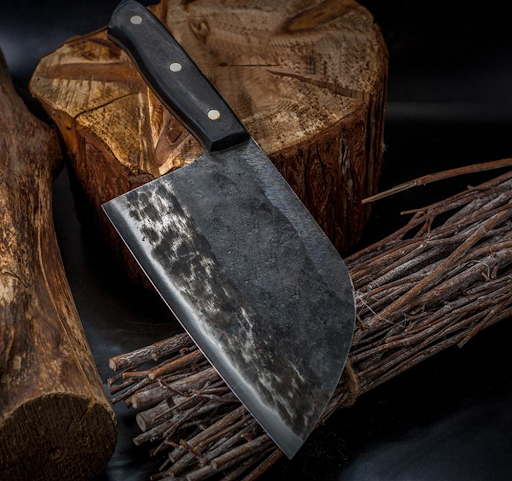Trying to choose the right kitchen knife can be overwhelming, especially when faced with a wide array of choices. For example, the chef knife, which is typically an all-purpose tool, is available in several varieties – one of them being the Serbian chef knife. Originating from Serbia, it is a must-have for any home chef! Considered an incredibly versatile kitchen tool that combines design elements from a meat cleaver and a Japanese santoku. Made of carbon steel, consider perfect for a variety of cutting tasks, while being low-maintenance and offering great value for money. Let’s discuss more things about this knife!
A Brief Note On The Serbian Chef Knife
This kitchen knife type has become increasingly popular in recent times due to its high-quality blade material and engineering. Blending the features of a santoku and a meat cleaver, its curved spine and flat, sharp cutting edge make it a well-balanced, hefty, and durable knife. Forged by hand from carbon steel, the knife has a full tang construction, which pushes the center of gravity further back to reduce fatigue. Additionally, its carbon steel blade sharpens easily and retains its edge for a long time.
Why Considered A Must-Have Tool In The Kitchen?
It is the perfect all-in-one knife for a variety of tasks including chopping, slicing, or mincing ingredients such as meat, fish, vegetables, cheese, and bread. For beginner chefs, it is an ideal tool to practice cooking techniques. Even advanced chefs appreciate the Serbian knife as a dependable backup option in case of loss or damage to their specific knives. The heavy-duty design and material properties make it a desirable choice for cooks of all abilities.
What Are The Things To Consider Before Buying?
A genuine Serbian chef knife is crafted with a carbon steel blade, which is known for its strength and sharpness. However, it should be noted that this material is prone to rust and staining. If you’re looking for a more durable blade, then carbon steel is a solid choice. On the other hand, if you’d prefer a blade that’s more resistant to corrosion, then a stainless steel knife may be a better option.
Despite its versatility, a Serbian knife’s geometry may not be suitable for all tasks. For example, when preparing delicate items such as soft fruits, vegetables, pastries, and cheese, its large blade surface area could generate high friction that could damage ingredients. For such delicate items, a slimmer classic chef knife may be better suited.
The Serbian knife is an incredibly cost-effective choice for both amateur and professional chefs alike. Perfect for those who want to get into cooking but don’t want to invest a lot of money in a complete knife set, this knife is lightweight, sharp, and easy to sharpen and maintain. Additionally, it provides excellent value for money, allowing beginners to learn fundamental knife skills without needing to invest in a full knife set.
What Is the Best Way To Use The Serbian Chef Knife?
The best way to grip a Serbian chef knife is near the top of the handle, with your thumb and index finger firmly grasping the lower part of the blade. Plus, the other three fingers wrap around the handle for additional stability. Alternatively, you can grip the handle with all of your fingers, although this might not be as comfortable as the first grip. When cutting, you should use your non-dominant hand to hold down and stabilize your ingredients.
Wrap Up
A Serbian chef’s knife is a good addition to your kitchen tool set. Its smooth grip allows you to cut ingredients with precision.








